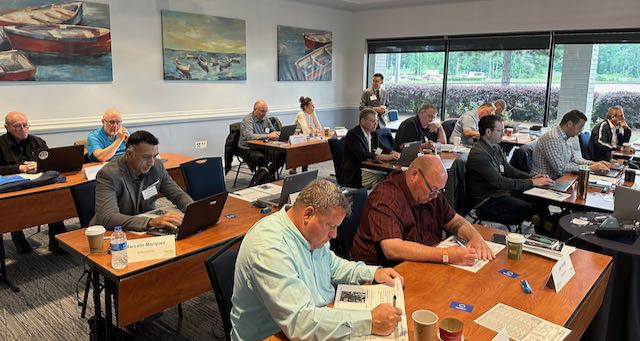Use Equifactor® Troubleshooting & RCA to Improve Overall Equipment Effectiveness

OEE Basics
Before we explain how root cause analysis can improve overall equipment effectiveness (OEE), let’s look at the basics of OEE.
OEE measures how efficiently you use your equipment to produce your product after subtracting scheduled losses. Scheduled losses include:
- scheduled plant shutdowns or maintenance time,
- scheduled breaks, lunches, holidays, or weekends,
- shutdowns due to no need for production (no orders).
OEE is different from Total Effective Equipment Performance (TEEP). OEE should be a higher percentage than TEEP.
TEEP baseline is seven days per week and 24 hours per day. OEE starts with planned production time, which is TEEP’s baseline minus the time lost due to the items in the list above (scheduled losses).
Losses are subtracted from Planned Production Time to give you the measure of Fully Productive Time.
Fully Productive Time considers these losses that are subtracted from Planned Productive Time:
- Availability Loss: Time lost due to stopped production, including equipment failures, material shortages, and change over time.
- Performance Loss: Production loss due to running the equipment at less than the full rated speed. For example, running the equipment slower to produce the needed quality, a quick stop to make adjustments to maintain quality or equipment performance, misfeeding, jams, or quickly replacing worn equipment.
- Quality Loss: Losses due to manufactured parts that do not meet required standards (customer quality requirements), including scrap or rework.
Here is an article that explains OEE calculations in more detail:
https://www.oee.com/oee-factors.html
Calculating these losses and arriving at the numbers for TEEP and OEE is called a Loss Analysis, and it is explained in more detail in this video…
That should give you ideas about calculating OEE and TEEP.
But what does that have to do with root cause analysis?
Improving OEE

To improve OEE, your measure of effectiveness when using your equipment, you need to reduce Availability Loss, Performance Loss, and Quality Loss. When any of these losses occur, you have an OEE incident.
For example, if the equipment failed and required unscheduled maintenance, you would need to troubleshoot the failure, and you could perform a root cause analysis of the equipment failure.
Equifactor® Troubleshooting was designed to troubleshoot equipment failures. It has a standard list of equipment troubleshooting tables (or you can develop your own custom troubleshooting table for your specific equipment and add it to the existing Equifactor® Troubleshooting Tables).
Once you know how the equipment failed and if you decide that the failure is significant enough to require a root cause analysis, you can perform the root cause analysis using the TapRooT® System.
The TapRooT® System has you draw a SnapCharT® Diagram to help you understand what happened (including the information gained using the Equifactor® Troubleshooting Tables) and use the Root Cause Tree® to help you identify the root causes of human performance or equipment failure Causal Factors.
Finding and fixing the root causes of OEE incidents is how TapRooT® Root Cause Analysis can help you improve Overall Equipment Effectiveness, which will improve your plant’s production performance and profitability (lower costs).
Five Ways to Learn More About Equifactor® Troubleshooting and TapRooT® Root Cause Analysis

1. Articles
First, there are several articles you could read to learn more about Equifactor® Troubleshooting and TapRooT® Root Cause Analysis, including…
- Equipment Failure? Use Equifactor® Troubleshooting During Your Root Cause Analysis
- Equifactor® Equipment Troubleshooting Basics
- Ensure your equipment failures are fixed the FIRST time with Equifactor®
2. Website
Visit the home page for Equifactor® Troubleshooting (CLICK HERE).
3. Video
Third, watch this video about Equifactor® Troubleshooting and TapRooT® Root Cause Analysis…
4. Equifactor® Book

Fourth, read Book 5: Using Equifactor® Troubleshooting Tools & TapRooT® Root Cause Analysis to Improve Equipment Reliability.
To order the book, see:
5. 2-Day Equifactor®/TapRooT® Course

Finally, you can attend the following:
2-Day Equifactor® Equipment Troubleshooting &
TapRooT® Root Cause Analysis Training
Click on the link above for the course outline. The course material includes the Equifactor® Book.
CLICK HERE for the upcoming course dates and locations.
We guarantee the Equifactor®/TapRooT® Course will help you perform systematic equipment troubleshooting and find the true root causes of your equipment problems that you previously would have overlooked. Plus, it will help you develop corrective actions that you and your managers will agree are much more effective.
Don’t wait! GET REGISTERED for Equifactor® Training TODAY!

(This blog article was republished from the original article in 2021 because people still need to know how to use advanced root cause analysis to improve OEE. I hope you enjoyed it.)




This is incredible, unlocking many hindrances in daily routine operations in my OEE management and derivation.